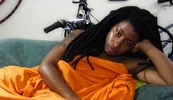Courage is resistance to fear, mastery of fear, not absence of fear.
Mark Twain
Fear is nature's guardian that warns and alerts us to real or perceived dangers. Knowledge of fear is essential to survival since fear can sabotage the ultimate weapon of our intelligence making years of self-defense and emergency survival training useless. This is why understanding how to train our response to fear is one of the most important survivals skills.
Fear of a real or imagined threat triggers the autonomic nervous system to prepare the human organism for sudden and frantic activity. Known as theFight or Flightresponse, this survival mechanism prepares the body to either, flee a potential predator through the hazards of open terrain in a race for survival, or to face the predator in a life or death battle. In either event, the body must be able to call on every ounce of energy and numb any pain that might interfere with running or fighting.
The autonomic nervous system consists of the sympathetic and the parasympathetic nervous systems. The sympathetic is responsible for preparing the body for action, while the parasympathetic is responsible for preserving energy.
A threat will cause the sympathetic nervous system to signal the endocrine system to release hormones causing a series of reactions:
* Increased heart rate to increase the flow of blood throughout the body
* Respiration is affected either by hyperventilating or holding in the breath
* Arteries dilate to increase blood flow to the surface to provide the anticipated demand of oxygen from the muscles. (This can be observed by the face becoming flushed)
*Body temperature increases producing sweat, and body hair may become erect
* Blood flow to the digestive organs is restricted to provide more blood to the muscles, the stomach may suddenly feel nauseous, and vomiting is not uncommon
In addition, the adrenal glands increase the availability of blood sugar (glucose) to release stored energy. This process is akin to revving the engine and feeding nitrous oxide into the fuel mixture. Endorphins, whose molecular structure closely resembles morphine, are released into the brain to numb the anticipated pain of injuries and fatigue.
However, the body cannot maintain this heightened state of readiness for long. Soon the parasympathetic system is triggered into action to counter all the changes caused by the sympathetic system: Heart rate is reduced, breathing becomes shallow, gasping, with frequent sighing, and the mouth becomes dry. Blood is drawn in towards the inner body restricting the flow to the brain, which may cause dizziness, spots in peripheral vision, and fainting. The face becomes pale and waxy and body temperature drops. The digestive system may suddenly kick in resulting a bowel movement or release of the bladder.
For a short period the two systems alternate back and forth in a battle for control of the body's nervous system, a battle always won in the end by the parasympathetic. All these opposing responses can take place in a matter of minutes.
Fear prepares the body for action. The accompanying increase in strength, pain threshold, and endurance can be lifesaving assets. It is not something we want to do without. However, too often fear turns to panic and it is then that fear becomes a liability.
The problem exists not in erasing fear entirely, but rather a delicate balance of enhanced awareness and body readiness, combined with a detached self-control. There are three quick techniques to help you lessen fear.
Breath Control
Fear triggers the instinct to make as little noise as possible and focus on the possible threat. This instinct was a benefit to our ancient ancestors huddled in the bush and hearing a twig snap in the darkness signaling an approaching predator. To make as little noise as possible we do two things, we freeze, and hold our breath.
To reduce system noise made by the respiratory system we either hold our breath or breathe shallowly. However, holding the breath for too long while the sympathetic nervous system is stimulated causes a sudden demand for oxygen. The signal to breathe is overstated and, instead of regular breathing, a person may begin to hyper-ventilate.
Hyperventilating reduces the amount of carbon dioxide in the bloodstream. The body needs a certain amount of CO2 and a rapid drop of it constricts blood flow to many vital organs. Constriction of blood vessels in the brain will cause dizziness, disorientation, and may lead to loss of consciousness. Reduced blood flow to the heart muscle may lead to chest pains. The high oxygen level can make one nervous and edgy, and cause a feeling of `pins and needles', muscle spasms, nervous twitches, and even convulsions. The effect of a lack of CO2 also contributes to panic attacks.
Breath control is the best technique to reduce fear. Simply being aware of the tendency to hold your breath when frightened will help you re-establish normal breathing rhythms.
Whenever you feel frightened or anxious you should establish a regular deep breathing pattern. Focus on your abdomen and take three short breaths holding each for one second before exhaling. On the fourth breath, begin deep breathing at a medium tempo. Inhale as slowly as possible up to a count of five, then hold the breath in for a count of three, then exhale for a count of five. Be sure that the length of inhalation is equal to the exhalation. #_edn1" [i] Abdominal breathing will help you remain calm and reduce feelings of fear.
Relax
The instinct to freeze when frightened results in tense muscles which will interfere with natural reactions and adds to the anxiety by reinforcing fear in a bio feedback loop. To break this loop you need to relax and loosen up. The first place to start is with the shoulders. Most people will raise their shoulders and pull their chins in when frightened. Pull your shoulders down and relax the muscles of the neck and shoulders. Do a couple of quick shoulder and neck rolls then shake out your arms and hands. Pull your head up and chin out. This posture is associated with confidence and will help dispel anxiety.
Movement
The instinct to freeze when frightened is epitomized in the metaphor of a deer caught in the headlights. Startled by a car traveling down the road, a deer will often freeze in the middle of the road to its demise rather than run off into the safety of the bush. Likewise, many people will also freeze into inaction during a threatening situation. To break this instinct one should simply move. Rather than just wait in dread, go into action. Either go to the rescue or evacuate the scene. Doing something will lessen the dread of fear and help to restore confidence.
Whether you are in an accident, natural disaster or predatory attack, remember to breath, relax, and take action to ensure your and your family's safety.
[i] This type of breathing technique aids in the production of beta and theta wave patterns associated with relaxation, visualization, and recovery. Abdominal breathing mimics the natural breathing that occurs during the stage of sleep know as REM (Rapid Eye Movement). It is during REM sleep that we dream and it is thought that during this stage that the conscious and sub-conscious minds share information.



